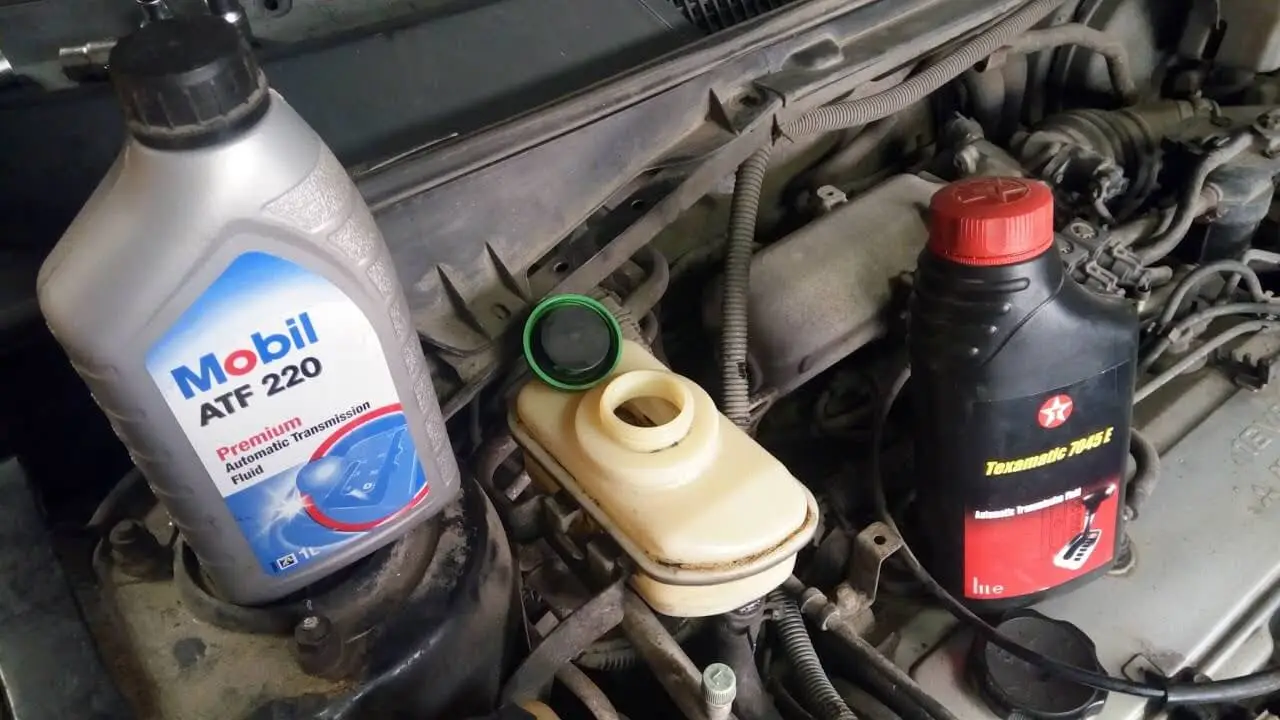There are a few oblivious signs you need to change power steering fluid on your vehicle.
Power steering is a system commonly found in modern vehicles. It is a technology that allows drivers to control the steering wheel easily. Without power steering assistance, turning the wheel around a sharp bend will be more complex than necessary. The system is filled with a fluid that allows it to run smoothly.
Unfortunately, the significance of power steering fluid is often overlooked unless a problem arises.
Unlike oil, power steering fluid doesn’t burn away. Instead, it becomes dirty and contaminated over time. This means that it will require to be changed after some time.
The contaminated fluid strains the power steering pump, making it work harder and potentially leading to steering failure [1]. How do you tell if it’s time to change the power steering fluid?
This article will discuss indicators to help you determine when to replace the power steering fluid.
Signs You Need To Change Power Steering Fluid

The most common signs of power steering fluid change include hard and unresponsive steering, squealing sounds, and foam or discolored fluid. In case your power steering fluid is leaking, you need to fix the cause of the leak first.
- Difficulty in Steering
As power steering fluid ages, it starts to lose its effectiveness. You will notice that it becomes more challenging to turn the steering wheel. A heavy or difficult-to-control steering wheel is the clearest symptom of insufficient or contaminated power steering fluid.
The increased effort when steering is particularly noticeable at low speeds or when parking. Unsuitable steering fluid inhibits the system from working correctly, resulting in a clumsy steering wheel [2].
It indicates that the fluid no longer provides the necessary lubrication and hydraulic assistance that makes steering easier.
If you notice a difference in how your steering wheel functions, check your car’s power steering fluid level first. Your vehicle might experience additional trouble if you do not respond to the problem appropriately. To avoid further issues, consider having your vehicle inspected by a professional to guarantee that it is in good working order.
- Squealing sounds
Low steering fluid level is the most common cause of power steering noise. Because the power steering fluid reservoir is small, many owners fail to check it regularly. As a result, even a little fluid loss can lead to problems.
Your car is likely to have low-power steering fluid if you hear squealing or whining noises when the wheels turn. A pump is used to circulate the fluid in the power steering system to allow for smooth steering [3].
If there is insufficient fluid, air begins to circulate through the steering mechanism. This eventually results in weird noises as you crank the steering wheel.
To eliminate the squealing sounds, start by examining the fluid level. Top up or replace if required. If that doesn’t get rid of the noise, make an appointment with a service technician to determine if something else is causing the problem.
- Foamy or Discolored Fluid
Power steering fluid is typically a bright red liquid. Over time, it becomes contaminated with dirt, debris, and metal particles from the steering system. If you notice a dark or brownish hue during system inspection, it signifies that the fluid is dirty and needs replacement. [4].
Darker fluids, particularly those with a burnt smell, usually indicate that the fluid has been destroyed and is no longer efficient. Particles in the fluid are another clue to check for. Particles in your fluid indicate that sludge and impurities have entered your vehicle’s system. Therefore, you need to flush the reservoir and refill it with fresh fluid.
A healthy power steering fluid should be smooth. If you inspect the reservoir and see a foamy or milky appearance, it indicates the presence of air or water contamination in the fluid.
The presence of air in the fluid causes noisy operation. At the same time, water stimulates corrosion within the steering system. Both cases call for a quick fluid change.
- Fluid Leaks
A red fluid dripping onto your garage or driveway floor is likely an indicator that your power steering fluid is leaking. A power steering fluid leak is caused by two main factors: age and constant use. As the supply and pressure hoses age, holes may form through which fluid might leak.
Similarly, as mileage grows, the O-rings and seals lose their flexibility. Seals harden in such circumstances, and small pieces start falling off, which results in fluid leakages. When you have a power steering fluid leak, it is essential to replenish the fluid [5].
You can follow several best practices to address and maintain your power steering system. For example, you should flush the system multiple times to remove old fluid and air to prevent leaks. Furthermore, you should replace all worn-out parts like hoses, pumps, and belts.
Sometimes, you can use the power steering stop leak solution, although it is temporarily not a permanent fix. You are also advised to always use premium quality fluid to ensure smooth operation and extend the system’s life.
Related: Is Power Steering Fluid Universal
- Unresponsive or Jerky Steering
Jerky steering is a common issue in vehicles, often resulting from issues within the power steering system. The erratic movements may indicate inconsistencies in the hydraulic assistance the power steering system provides. This is majorly attributed to degraded steering fluid.
The irregular steering is dangerous. It compromises the driving experience and poses safety risks. To address the issue, check the power steering fluid level and condition [6].
If the fluid appears dirty or discolored, it strongly indicates that it requires change.
Replacing the old fluid with fresh, high-quality fluid will restore proper lubrication and hydraulic function. If the fluid change doesn’t resolve the problem, seek the expertise of a qualified mechanic. They will comprehensively inspect the power steering system to identify underlying issues.
Related: Power Steering Malfunction Mercedes
Conclusion
It is important to pay attention to the signs that suggest the need to replace the power steering fluid in your vehicle. Neglecting the maintenance of power steering fluid can lead to steering difficulties, potential steering failure, and compromised safety on the road.
Regular power steering fluid change is critical for good steering performance and vehicle safety. You should make an effort to maintain your power steering system. This includes staying informed about the signs that suggest a need for power steering fluid change, as discussed in this article.
For particular fluid replacement intervals, consult your vehicle’s owner’s manual. Always use the recommended fluid type. You will be assured of a smooth and effortless driving experience by prioritizing timely power steering fluid maintenance.
Read Next: Increased Steering Effort BMW




